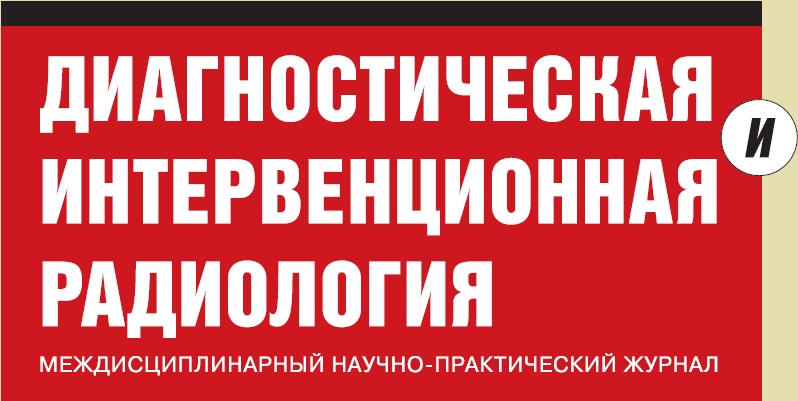Аннотация: При выполнении баллонной ангиопластики инфаркт-связанного сегмента огибающей ветви левой коронарной артерии под защитой дистального артериального русла устройством «фильтр-проводник» произошла тромбоэмболия в фильтрующий элемент, которым после финального стентирования был извлечен тромб 3x4 мм. При контрольной коронарографии кровоток по инфаркт-связанной коронарной артерии TIMI 3. Наличие в арсенале интервенционного кардиолога различных устройств для удаления или фиксации тромботических масс позволяет улучшить результаты первичной чрескожной коронарной ангиопластики у больных острым инфарктом миокарда. Список литературы 1. Jerlih A.D., Gracianskij N.A. i uchastniki registra REKORD. Nezavisimyj registr ostryh koronarnyh sindromov REKORD. Harakteristika bol'nyh i lechenie do vypiski iz stacionara. Aterotromboz 2009; 1: 105-119 [In Russ]. 2. Jerlih A.D., Gracianskij N.A. i uchastniki registra REKORD. Lechenie bol'nyh s ostrym koronarnym sindromom s pod#emom ST v stacionarah imejuwih i ne imejuwih vozmozhnosti vypolnenija chreskozhnyh koronarnyh vmeshatel'stv (dannye registra «REKORD»). Aterotromboz. 2009; 1: 120-122 [In Russ]. 3. Jerlih A.D., Gracianskij N.A. ot imeni uchastnikov registra REKORD. Registr ostryh koronarnyh sindromov REKORD. Harakteristika bol'nyh i lechenie do vypiski iz stacionara. Kardiologija. 2009; 7: 4-12 [In Russ]. 4. Anderson J.L., Adams C.D., Antman E.M. et al. ACC/AHA 2007 Guidelines for the management of patients with unstable angina/non-ST-elevation myocardial infarction — executive summary: a report of the American College of Cardiology/American Heart Association Task Force on Practice Guidelines (Writing Committee to Revise the 2002 Guidelines for the Management of Patients With Unstable Angina/Non-ST-Elevation Myocardial Infarction). J. Am. Coll. Cardiol. 2007; 50: 652-726. 5. Bhatt D.L., Roe M.T., Peterson E.D. et al. Utilization of early invasive management strategies for high-risk patients with non-ST segment elevation acute coronary syndromes: results from the CRUSADE Quality Improvement Initiative. JAMA. 2004; 292: 2096-104. 6. Birkhead J.S., Walker L., Pearson M. et al., on behalf of the MINAP Steering Group Improving care for patients with acute coronary syndromes: initial results from the National Audit of Myocardial Infarction Project (MINAP). Heart. 2004; 90: 1004-1009. 7. Elbarouni B., Goodman S.G., Yan R.T. et al. on behalf of the Canadian Global Registry of Acute Coronary Events (GRACE/GRACE2) Investigators. Validation of the Global Registry of Acute Coronary Event (GRACE) risk score for in-hospital mortality in patients with acute coronary syndrome in Canada. Am. Heart. J. 2009; 158: 392-399. 8. Hasdai D., Behar S., Wallentin L. et al. A prospective survey of the characteristics, treatments and outcomes of patients with acute coronary syndromes in Europe and the Mediterranean basin. The Euro Heart Survey of Acute Coronary Syndromes (Euro Heart Survey ACS). Eur. Heart. J. 2002; 23: 1190-1201 9. Primary versus tenecteplase-facilitated percutaneous coronary intervention in patients with STsegment elevation acute myocardial infarction (ASSENT-4 PCI): randomized trial. Lancet. 2006; 367: 569-578. 10. Gershlick A.H., Stephens-Lloyd A., Hughes S. et al. Rescue angioplasty after failed thrombolytic therapy for acute myocardial infarction. N. Engl. J. Med. 2005; 353: 2758-2768. 11. Kushner F.G., Hand M., Smith S.C. et al. 2009 focused updates: ACC/AHA guidelines for the management of patients with ST-elevation myocardial infarction (updating the 2004 guideline and 2007 focused update) and ACC/AHA/SCAI guidelines on percutaneous coronary intervention (updating the 2005 guideline and 2007 focused update) a report of the American College of Cardiology Foundation/American Heart Association Task Force on Practice Guidelines. J. Am. Coll. Cardiol. 2009; 54: 2205-2241. 12. Eeckhout E., Kern M.J. The coronary no-reflow phenomenon: a review of mechanisms and therapies. European. Heart. Journal. 2001; 22: 729-739. 13. Van de WF, Bax J, Betriu A, et al. Management of acute myocardial infarction in patients presenting with persistent ST-segment elevation: the Task Force on the Management of ST-Segment Elevation. Acute Myocardial Infarction of the European Society of Cardiology. Eur. Heart. J. 2008; 29: 2909-2945. 14. Baim D.S., Braunwald E., Feit F., Knatterud G.L., Passarnani E.R., Robertson T.L., et al. The Thrombolysis in Myocardial Infarction (TIMI) Trial phase II: additional information and perspectives. J. Am. Coll. Cardiol. 1990; 15: 1188-1192. 15. Leonardo Galiuto, Antonio G. Rebuzzi, Filippo Crea. The no-reflow phenomenon. JACC. 2009; 2(1): 85-86. 16. Rogers W.J., Baim D.S., Gore J.M., Brown B.G., Roberts R., Williams D.O., et al. Comparison of immediate invasive, delayed invasive, and conservative strategies after tissue-type plasminogen activator. Results of the Thrombolysis in Myocardial Infarction (TIMI) Phase II-A trial. Circulation. 1990; 81: 1457-1476. 17. Hori M., Inoue M., Kitakaze M. et al. Role of adenosine in hyperemic response of coronary blood flow in microembolization. Am. J. Physiol. 1986; 250: 509-518. 18. Tanaka A. No-reflow phenomenon and lesion morphology in patients with acute myocardial infarction. Circulation. 2002; 105: 2148-2152. 19. Henriques J., Zijlstra F., Ottervanger J. et al. Incidence and clinical significance of distal embolization during primary angioplasty for acute myocardial infarction. Eur. Heart. J. 2002; 23: 1112-1117. 20. Karila-Cohen D., Czitrom D., Brochet E. et al. Decreased no-reflow in patients with anterior myocardial infarction and pre-infarction angina. Eur. Heart. J.1999; 20: 1724-1730. 21. Iwakura K. Association between hyperglycemia and the no-reflow phenomenon in patients with acute myocardial infarction. J. Am. Coll. Cardiol. 2003; 41: 1-7.
Представлено клиническое наблюдение эффективного и безопасного применения устройства «фильтр - проводник» производства компании Boston Scientific, USA, с целью профилактики развития феномена невосстановленного кровотока при выполнении первичной чрескожной коронарной ангиопластики у больного острым инфарктом миокарда.

Сайт предназначен для врачей








